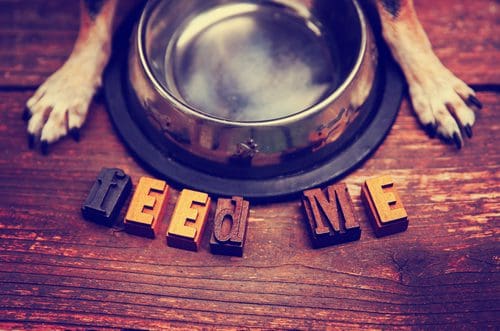
Post-Christmas, many of us feel like we’re fighting the battle of the bulge and, unfortunately, many of our pets are in the same boat. According to the British Veterinary Association (BVA), 60% of vets in the UK state that pet obesity is their biggest health and welfare concern.
Just as with humans, pets – from dogs and cats to rabbits and guinea pigs – who are carrying excess body fat are more vulnerable to certain health issues that can impact on their wellbeing and quality of life. Pet obesity can also cause serious health problems, including diabetes, respiratory disease, high blood pressure and some cancers.
DID YOU KNOW?
The average UK dog is 22% overweight, according to a recent study by Pets at Home
Although some health problems or medications can lead to your pet gaining weight, in most cases, it’s simply a case of them eating too much and not exercising enough. Certain breeds of dog have a higher risk and the likelihood of obesity increases with age and when dogs are neutered, particularly females.
As an owner, it’s up to you to take control of your pet’s weight management. While this may sound rather daunting, it’s more straightforward than you may think – and the good news is there are lots of great tools available to help. And, just think how much your pet will benefit if you make a few simple changes. You know they’re worth it!
DID YOU KNOW?
One slice of ham for an average-sized cat is the equivalent to nine slices for an average-sized woman and one ounce of cheese is equivalent to a human chowing down on more than half a pound of cheese...
Start by assessing your pet’s weight, shape and general body condition – your vet will be only too happy to help you out with this. From here, you can draw up a plan, which will include closer monitoring of the amount you feed and introducing more exercise and playtime.
How to check if your dog is overweight
- You should be able to see and feel the outline of your dog’s ribs without excess fat covering.
- You should be able to see and feel your dog’s waist and it should be clearly visible when viewed from above.
- Your dog’s belly should be tucked up when viewed from the side.
DID YOU KNOW?
Small, inactive dogs need only about 185 to 370 calories daily, while large and active ones may need between 1,000 and 2,000 calories.
How to check if your cat is overweight
- You should be able to see and feel your cat’s ribs, spine and hip bones.
- Your cat’s waist should be clearly visible when viewed from above.
- Your cats belly shouldn't be sagging underneath, there should only be a small amount of belly fat.
DID YOU KNOW?
Wild rabbits run about five miles a day and, without adequate exercise, the skeletal frame of a pet rabbit suffers.
Top weight management tips
- Always follow the product’s feeding guide, which will be on the pack. You may need to adjust the amount you feed depending on your pet’s age, neuter status, breed and lifestyle.
- Always weigh food portions with kitchen scales, until you know the right amount to feed using a cup. Don’t estimate as this is the easiest way to overfeed.
- Avoid human food and table scraps.
- Ensure your pet has an active lifestyle with lots of walks and playtime. This will benefit your health as well as your pet’s!
- Weigh your pet regularly – at least once a month. Ideally, you should be able to feel their ribs with very light finger pressure.
- If your pet is overweight, or you notice a weight gain or loss, talk to your vet. There may be a health issue which needs treatment or a special diet.
DID YOU KNOW?
As a rough guide, it’s recommended that cats (particularly indoor cats) receive about 40 minutes of playtime daily, and healthy adult dogs are exercised for at least an hour.
Easy-to-use online resources
Is your pet too portly? The PFMA (Pet Food Manufacturers Association) has developed Pet Size-O-Meters for dogs, cats, rabbits and guinea pigs, which you can check out here >>
DID YOU KNOW?
Treats should never make up more than 10% of your pet’s daily calorie intake. If you do provide treats, always reduce the size of your pet’s meal.
There are other great tools to help you out including:
- A dog calorie counter
- A cat calorie counter
- A food diary (print out and stick on the fridge!)
- A pet pledge that you can print out and all sign so that everyone in the family is on board to help your pet get in shape
- A 7-point, step-by-step guide to help owners prevent and manage pet obesity
More food for thought
For pets who need to reduce their calorie intake, why not try:
Burgess Supadog Finest Adult Light
Sources: bva.co.uk, vettimes.co.uk, rspca.org.uk, pfma.org.uk














